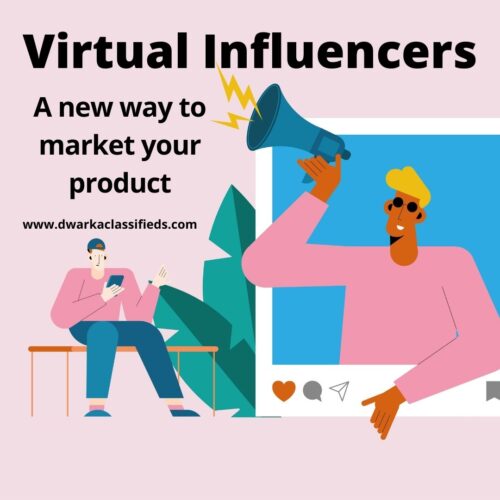
Virtual influencers: a new way to market your product

Virtual influencers are a relatively new phenomenon, but they are quickly becoming a popular way to market products.
Brands are beginning to realize that virtual influencers offer unique benefits such as the ability to target more niche audiences and more importantly, virtual influencer videos are more appealing for consumers than live ads.
The virtual influencer advertising industry is still relatively new, but it is quickly growing in popularity!
Table of Contents
What are virtual influencers and how do they work?
A virtual influencer is a virtual character, which can be created on programs such as Photoshop or Maya, that is designed to look like a real person.
Virtual influencers have the ability to engage in video marketing for your company by convincing potential customers of the benefits of buying your product with their virtual “personality,” tone of voice, and messages in videos.
Why virtual influencers are a better marketing strategy than live ads?
With virtual influencers, brands can reach out to niche audiences that would not otherwise be able to see their ads because virtual influencers’ messages can target smaller audiences such as gamers or beauty gurus. With virtual influencers, brands can also see detailed analytics about where virtual influencer campaigns are succeeding. This allows pertinent information to be gathered about virtual influencers so that modifications can be made for more successful virtual influencer campaigns in the future. Also, virtual influencer videos are far more appealing than live ads because, unlike live advertisements, virtual influencer videos can include personal customized messages and emotions expressed through their virtual “personality”.
The benefits of using virtual influencers to market your product
- Virtual Influencer’s custom-tailored personalities allow them to target niche audiences
- Virtual Influencers have detailed analytics available that shows exactly what parts of a campaign were successful
- Unlike live ads, virtual influence videos are much more appealing because they can include virtual personalities
How to create a virtual influencer campaign for your product
- Research virtual influencers who have engaged audiences with similar interests as your target audience
- Build up an appealing virtual character by choosing their name, age, gender, interests, etc., and then design their virtual appearance
- Create virtual influencer videos that are personalized with relevant information about your product using voice recordings or scriptwriting software
- Promote virtual influencer campaigns on social media through Twitter, Instagram, Snapchat, etc. by advertising the virtual influencer’s videos
- Analyze which aspects of the campaign were successful and make any necessary changes to improve future virtual influencer campaigns by utilizing more precise targeting options or virtual influencer videos that are personalized with virtual personalities
The future of virtual influencers and marketing
As virtual influencers become more popular, virtual influence could become a part-time or full-time job for people interested in Internet culture and virtual characters. Virtual influencers will also pose a threat to large social media companies because virtual influence is a direct competitor to their business by offering specialized targeted content instead of the broad advertisements provided by these companies. Virtual Influencers may even be used as political campaign managers in the future!
Conclusion
Virtual influencers are a new way to market your product and virtual influence is quickly becoming popular as a strategy. Virtual influencers have the ability to target niche audiences that would otherwise not be able to see their ads, which can lead to more sales with less effort. You should research virtual influencers who engage similar interests of your target audience and then create customized virtual videos for them on programs like Photoshop or Maya. Promote these virtual influencer campaigns through social media by using Twitter, Instagram, Snapchat, etc., analyze which aspects were successful in order to make necessary changes for future virtual influencer campaigns. The future may hold more possibilities with virtual influencer marketing!
